Düsseldorf
Arriving in Düsseldorf, I cut through the centre of town to my accommodation for the next couple of nights. I was to stay in my first youth hostel! The hostel was impressively modern and sleek, with a plethora of communal areas and facilities. After quickly checking-in, I made my way through the lobby and to my dormitory. Through the entry door, there was a long corridor that turned right into a bathroom, or left into the sleeping area where three bunk beds marked the corners of the room. The beds surrounded a communal area with a table, stools and wooden storage unit. I arrived to find I was the only person present in my dorm, though evidence of my roommates was plainly evident around the room and beds. Having claimed a free upper bunk, I changed out of my walking gear and retrieved what I needed from my bag, before locking it in the pullout cage underneath the bottom bunk.
I headed out into the evening with a clear route in mind. During my research a day or so prior, I had located a restaurant in the old town which specialised in Schweinshaxe (pork knuckle) which had been a favourite of the Chamberlain household for many years. Tired and hungry after many days on the roads, I cut through town, found the restaurant just by the town hall, and ordered.
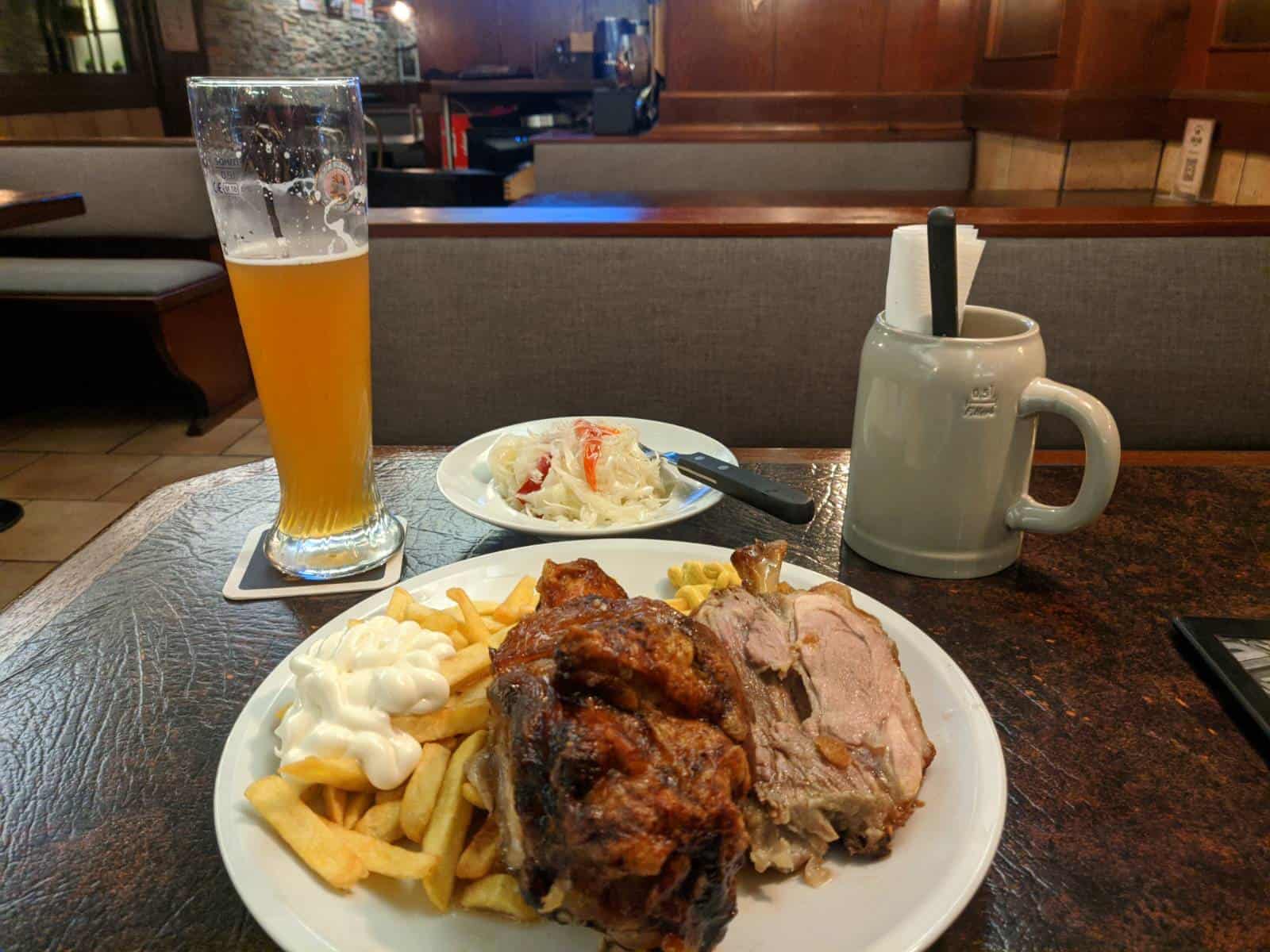
Given its industrial renown, I had always assumed that Düsseldorf would be a bit of a damp squib. That wasn’t the case. My hostel was well situated, just on the edge of the old town. After the luxury of a lie in (after all, this was my first day of no travel), I grabbed some breakfast from the hostel canteen and set off into town.
The old town is small and much rebuilt, but it has managed to retain its old charm. The prominent feature in town is the 19th century boulevard Königsallee, down the centre of which runs a landscaped canal, which is bordered on either side by two promenades. I spent most of the day walking around, or sitting on park benches and in the odd coffee shop. For an hour or so, I wandered around the Museum of Düsseldorf, before making my way past the Rathaus (town hall) to St Joseph’s chapel on the banks of the river. I read, planned, and wrote for much of the day.
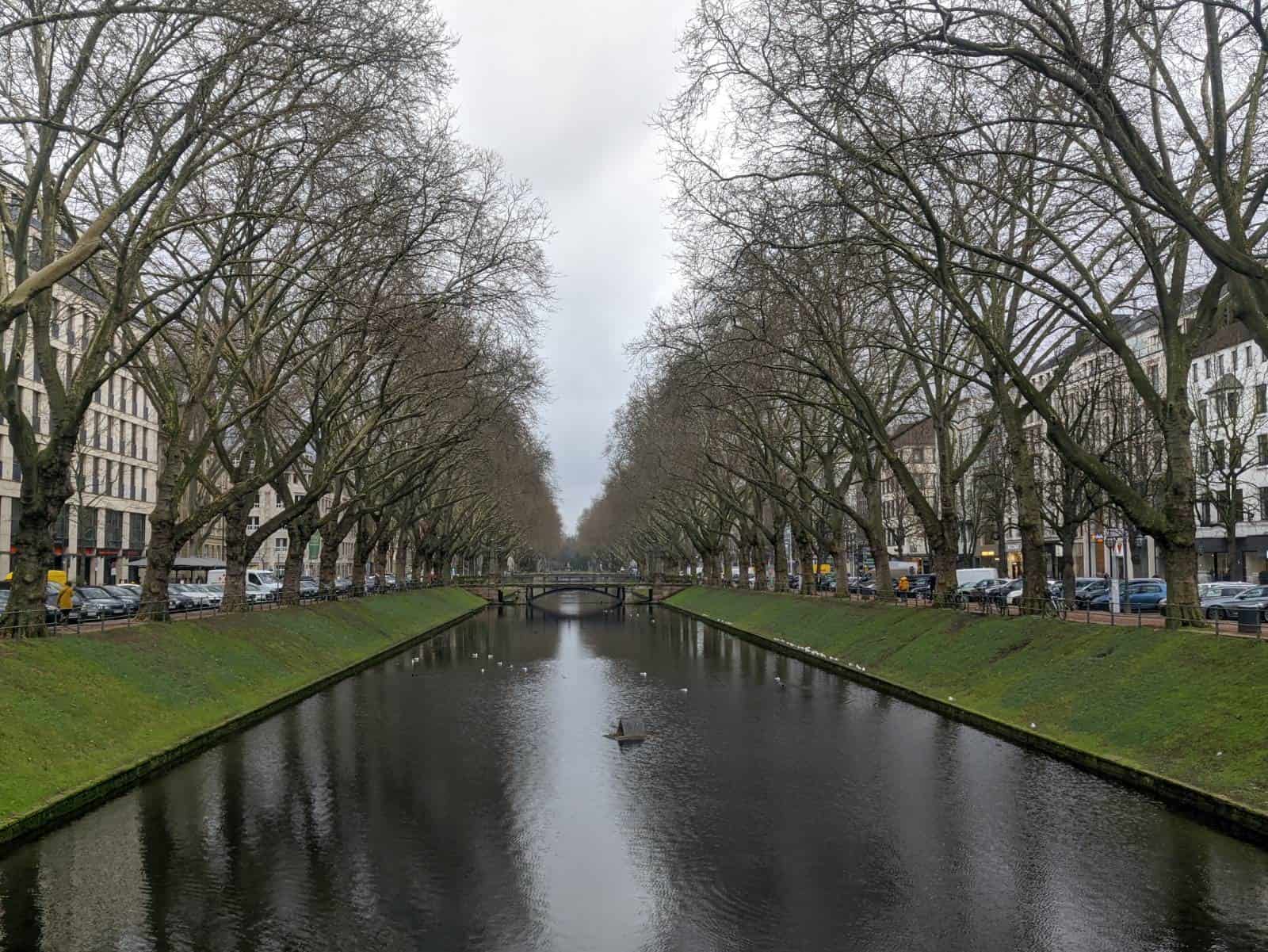
Cologne
I woke early the next day with a long day of walking ahead of me. I’d thought long and hard the night before as to how best to pack my things and get dressed come the morning, making the least amount of noise possible. Putting this plan into action, I was surprised to find my bunkmate Emre – who I had befriended the day before – was also getting up. He was from Istanbul and had been very excited that his city marked my final, “true” destination. As I climbed down from my top bunk and began to pack, he said goodbye to me. His farewell struck me as rather premature, given neither of us were packed nor even dressed. A moment later, he unrolled a mat in the middle of the room, and knelt down in silent prayer. Quietly, I dressed, zipped up my bag, and departed.
Following the river for 20 odd miles, I reached the city of Cologne. As I walked through the suburbs I noticed a mosque flying the Turkish flag, and slightly below it, the German flag, as if in afterthought. Shortly afterwards and with little warning, the twin spires of the Dom appeared off in the distance, poking out over the rooftops of the 70s apartment blocks that lined the suburbs outside the old town. In the late afternoon, I reached my accommodation for the next couple of nights; this was to be my first experience with couch-surfing. Frank, my host, lived just on the outskirts of Cologne’s core. He buzzed me into his accommodation and greeted me warmly outside the door of his flat. After settling in and showering, we shared a beer and some food he had so generously prepared, whilst watching the German iteration of I’m a celebrity. Soon, the conversation turned to discussion of German dialects – as all conversations ultimately end up – and, more specifically, Kölsch: the dialect of the region, now only really spoken by the older generation and wannabe hipsters.

The next morning, I decided to take an electric Lime scooter to the Dom. I felt immediately unsure what exactly the rules were on the German streets: did I qualify for the cycle lanes, the pavement, or the road? To placate all three, I took the decision to randomly alternate between them, taking in the sights as I snaked between roads and footpaths. Admiring the sheer enormity of the Dom, I ate my breakfast pastry and sipped my coffee. When I finished, I stepped inside.
The organ started up, right on cue, filling this great gothic sanctum with gloriously paired melodies. A sign pointed out a secluded wing of the cathedral for prayer only, and the sound of singing beckoned me inside. I sat on a pew and listened as the sound of a tenor duet wound together and echoed through the transept; a final, consistent note filling my ears as I looked up at the painted ceiling and altar ahead of me. When it stopped, I found a secluded spot near the cathedral treasury room and softly hummed a baritone tune which I’d suddenly remembered from my choirboy days. All was calm.


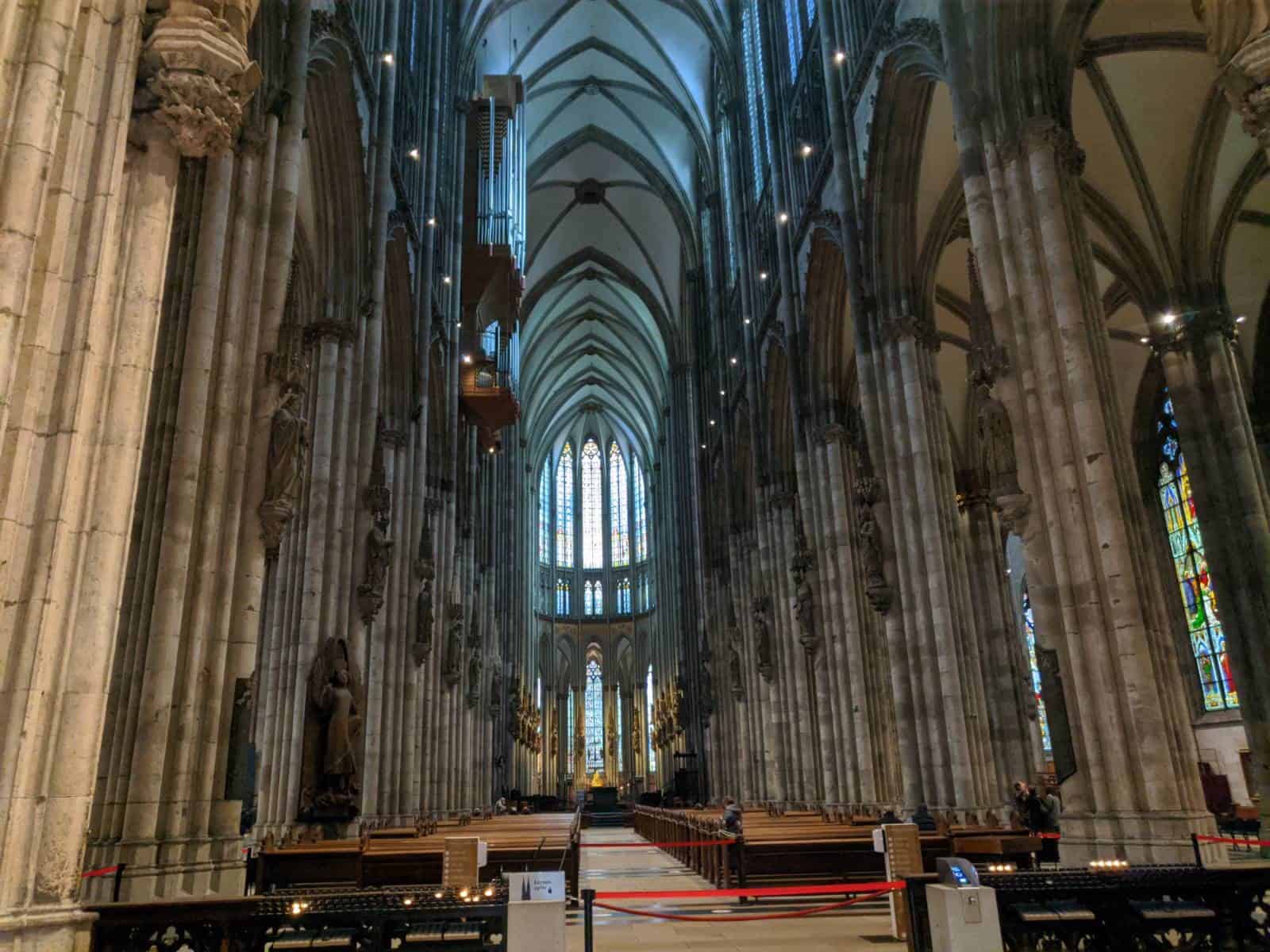
Back outside, I looped around the back of the building, noting the layers of buttresses and gargoyles as I headed towards the museums and parks that lay alongside the river. A good rule of thumb for most modern art galleries is that, the majority of the time, the building itself is more interesting than the art hung on the wall. The container is greater than its parts. Though I didn’t go into any of the exhibitions, I peered suspiciously through the great glass windows and walked swiftly through its public spaces (an episode which involved me dodging an art installation of rubber tyres strewn haphazardly around the rooms); this appeared no different. And so, with lots left to see, I pressed on towards the Altstadt.
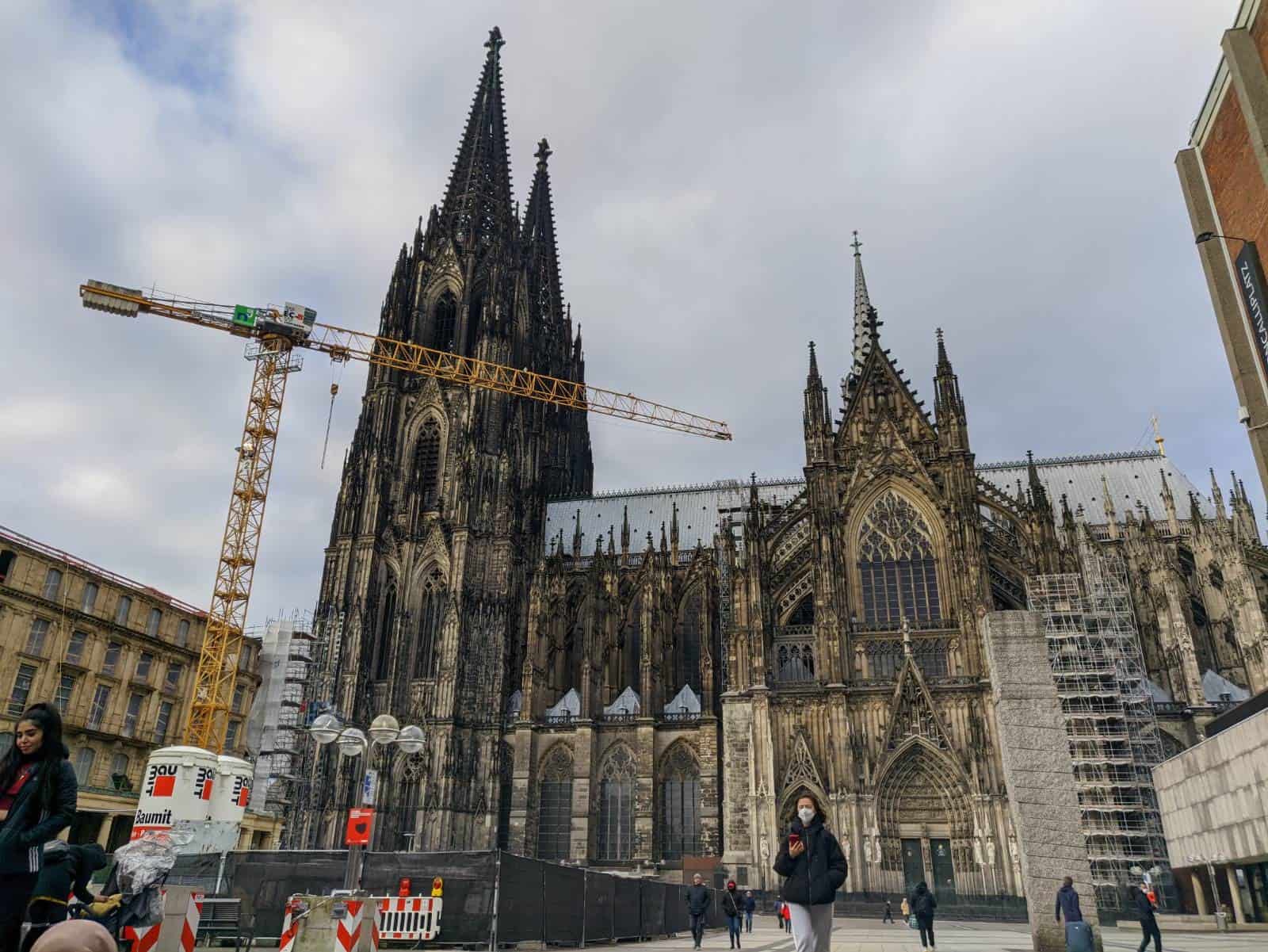
The crux of the old city can be easily identified through the array of houses baring multicoloured frontages. Cologne, at least the central parts, is an interesting blend of old and new: the medieval cathedral is flanked by the modern train station; the older, medieval buildings of the old town are a stone’s throw away from new art galleries and museums; etc… Though obviously not a centrally planned venture, the mix of old and new works well; the medieval character of the town still protruding through and doing its best to bring the varied architecture of the 20th century along with it.
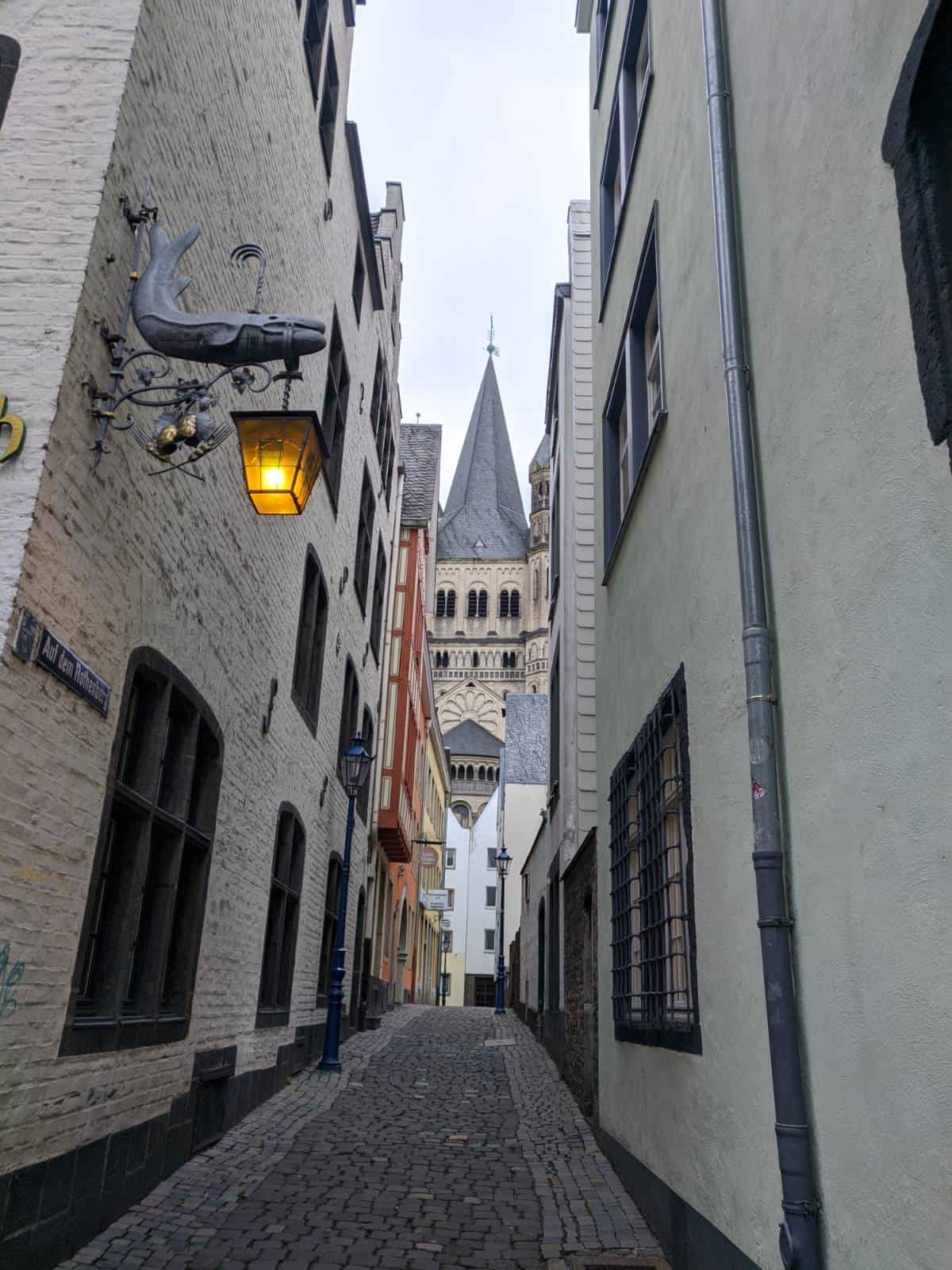
In the early afternoon, I sat for a while writing by the river, overlooking Deutz Abby across the water. What may ordinarily have been a somewhat nondescript Romanesque ex-benedictine monastery, seemed rather grand in its prominent position of the waterfront, opposite one of the world’s greatest gothic productions; its white walls shone across the water, as it sat quaintly nestled between two office blocks.
Later that day, whilst looking for a coffee shop (honest!) in which to sit and read, I found myself seated at a large table in the middle of one of Cologne’s famous “brewing houses”, a Brauhaus. A few hours following this, I sought out a different Brauhaus by the Dom, much more intentionally this time around. I planned to copy the actions of the drinkers at the other tables, but before I could order, the waiter placed a small glass of beer on a coaster in front of me and wandered off through the hubbub of the beer hall. That evening, I learnt a lot about Brauhaus culture from Frank. They all follow a style of drinks service whereby your near-empty glass is immediately replaced with a fresh, full one. After learning this first hand, I became quite taken with this custom: quite the opposite to the oh-so-rich-and-vibrant culture one might experience in the splendour of your local Weatherspoons. I soon learnt that the way to signal the end of the festivities was to place my coaster on top of my glass — though only after a couple more glasses than I had originally intended to drink. Poor me.
Cologne produces its very own type of beer, in what is called the Kölsch style. Each haus or “pub” is affiliated with its own local brewery and thus only serves that one type of Kölsch beer. I had visited, by fluke, two establishments run by the brewer Früh and thus, as is the way with these things, felt a strong attachment and allegiance to said brand, which I must admit resulted in my adamant exclusivity to the brand over the rest of my time in the region. A practise no doubt only exercised by the old, obdurate men of Cologne… and myself. Tradition!

Bonn
The next morning, I said farewell to Frank and pressed on to Bonn. I again took a Lime scooter back through the old town for one final look at the Dom, before ditching the ease of vehicular transport. The whole time, I worried that I might impale myself on my staff, which I had strapped in a makeshift fashion onto my front. Those I passed laughed with me, not at me…
After a consultation with Frank the previous night, I decided that the most scenic route would be to cross to the east side of the river and walk from there. I walked through parks and small riverside towns for most of the day. I knew that I needed to cross back over the river at some point, to align myself with Bonn. This provided me with an opportune moment to catch my first ferry over the Rhine. And so, on board the ship Christophorus, we crossed from east to west, vying for control of the river as we passed a container barge drifting slowing downstream: so went my maiden voyage.


The youth hostel I was to stay in that night was in a southern outskirt of town. I cut through the old city of Bonn, passing Beethoven’s house, the town hall, and the market squares. A couple of miles later, I came within touching distance of the hostel, and couldn’t wait to let down my load and relax. The gods had other plans; at a level crossing, I waited for half an hour as what must have been 15 freight trains passed in both directions, carrying mile upon mile of cargo.
Finally inside, I beheld the wacky scene before me. The hostel was located inside a repurposed storage hanger, within which an eclectic assortment of vintage caravans, RVs, train cars and touring buses had been distributed around. Each vehicle had been individually themed and kitted out as small “hotel rooms”. My small room was situated inside a train compartment, the window of which looked out into the hanger and surveyed the scene of neatly parked vehicles. In the expanse of the bizarre scene, I sat down to watch the rugby on my phone.
The next morning, I made my way back into Bonn. My main destination was Beethoven’s house and the museum within. Ducking into rooms and wincing as my clunky walking boots made loud creaks on the rickety floorboard, I made my way around, admiring the antique instruments and original manuscripts, and also scrutinising Beethoven’s death mask with a morbid curiosity.
With my mission complete, I sat on a bench outside overlooking the main square, listening to Bagatelle in A minor. Returning to my hostel to collect my bag and stick, I followed the path of the railway through the southern suburbs of Bonn, into Bad Godesberg.
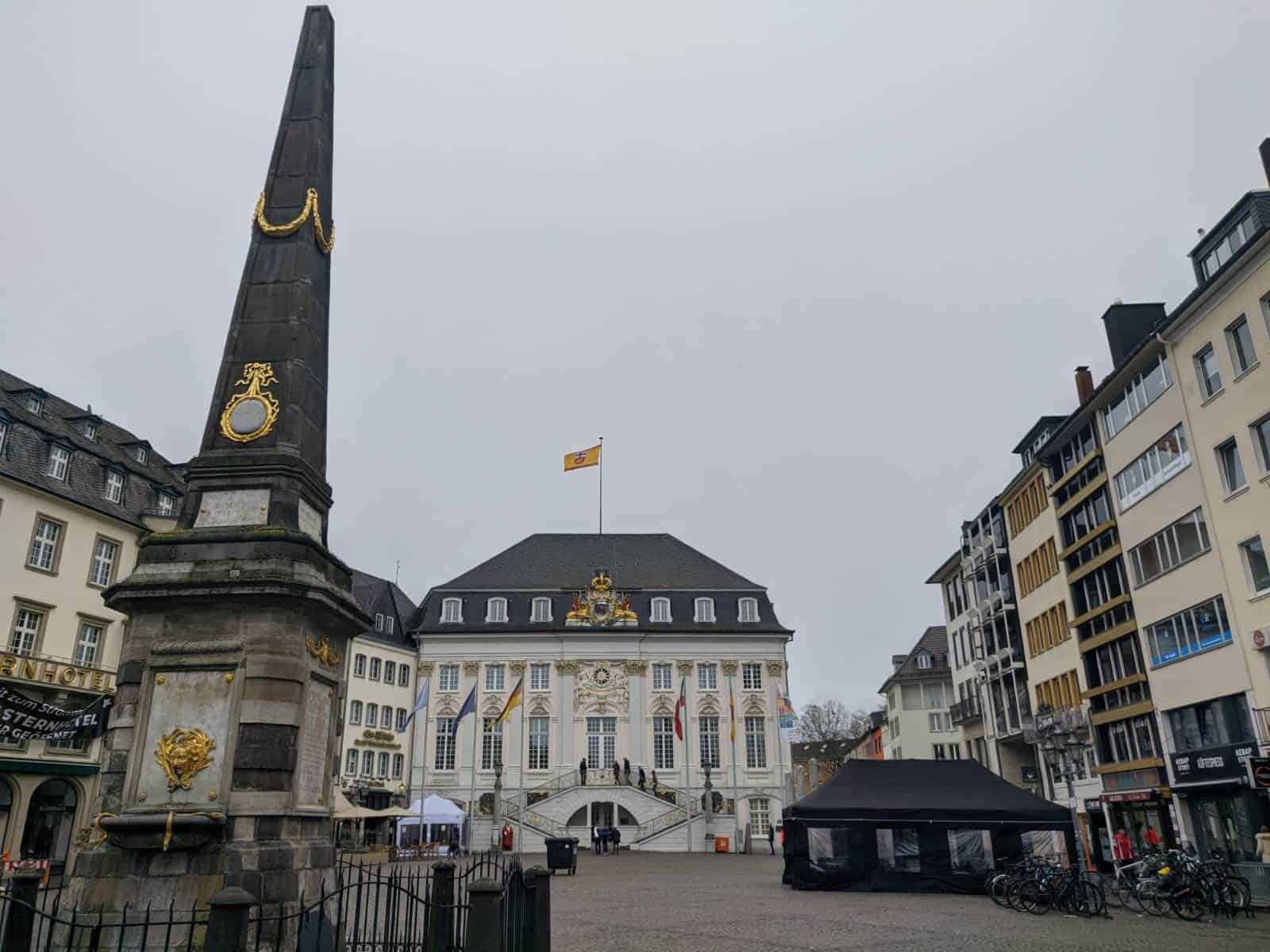
Thank you so much for reading. The past few weeks have been very busy, hence the delay in new content; there is more on the way, don’t worry!
New feature alert: You can view the logbook of my walk, here.
As you can see, I’ve adopted a slightly different style for this post, which I feel has afforded me greater flexibility. That said, I am sure this will be something that will constantly evolve for the duration of my posts, and will adapt to different subjects.
As ever, do let me know your thoughts: all feedback is both welcome and appreciated. Thanks y’all.

Wonderful you make it sound as if I was there
Granny xxxx